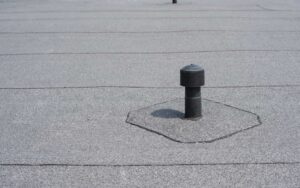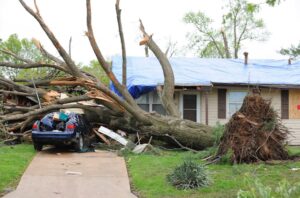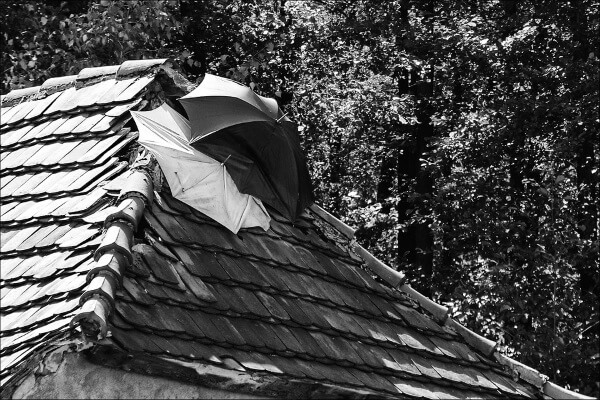
If you have the right knowledge, you can do an emergency roof leak repair quickly. Manufacturers have made roofs with the best design and material to withstand multiple storms. However, they will wear down over time. In addition, it will take some time for contractors to reach you during consistently bad weather.
When you see any of these five signs of a storm-weakened roof, you will need to conduct emergency roof leak repair. In addition to the signs, the solutions proposed only serve as temporary solutions until contractors finally conduct proper roof repairs for your home.
Dripping and Discoloring Internal Ceilings
Massive rainstorms can last from three days to a week. If you see your roofs starting to discolor, your roof has begun to leak.
Unfortunately, if the bad weather remains persistent over the next few days, the leak will grow in size. In turn, this will release a torrent of water into your internal ceilings. The internal underlayment protecting the ceiling will cause ponding. Consistent rains will overwhelm the underlayment and cause dripping along sections of the internal ceiling.
During lighter rain passages, you may need to conduct an emergency roof leak repair to prevent further damage.
Puddles on the Floor
The clearest sign of rain penetration is the presence of puddles inside your property. If your flooring has begun to show moist, it is a sign there is a small leak in your home.
In this light, puddles indicate there is massive internal roof damage in the affected area. If the storm persists, you can use buckets to catch water in the leaking section. This will prevent further floor damage. In fact, catching the water is most helpful for carpeted floors.
To prevent further ceiling leaks, you’ll need to conduct a basic emergency roof leak repair.
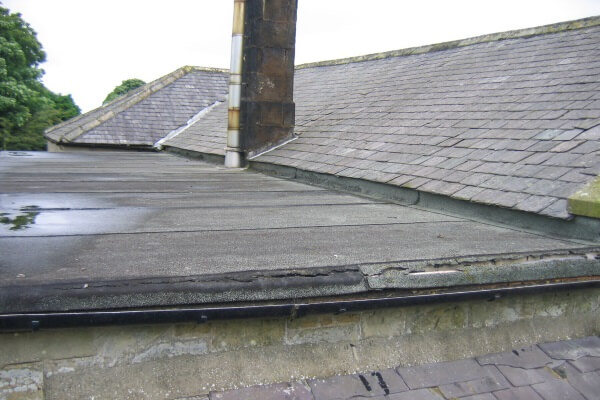
Moistened and Paint-Peeled Walls
Water huge torrents along your walls will damage its paint and material. Therefore, make sure to inspect your walls for water torrents. If possible, use a dry cloth after the passage of each torrent to prevent pain damage.
Unfortunately, roof leaks causing the running water on the walls is difficult to identify. Sometimes, roofs in these sections do not discolor. However, if you see rustic wall stains, it is a sign the wall is near a leak.
Quick emergency roof leak repair will reduce wall moisture damage. However, you will need professional wall estimate to reinforce water-infiltrated areas and prevent future water damage.
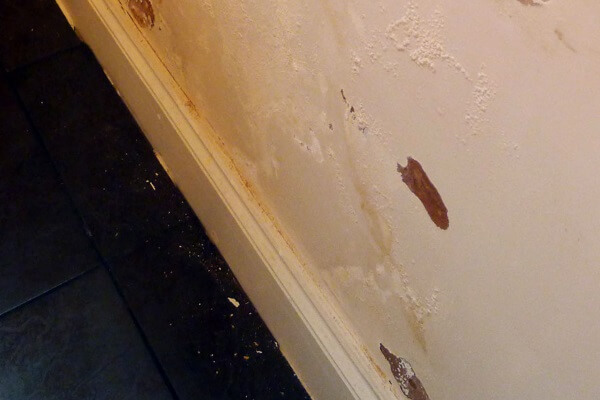
Multiple Leak Spots
When you see multiple roof discolorations and dripping, it is clear your roof has received extensive damage. If the situation does not permit you to call for contractors, you will definitely need to conduct an emergency roof leak repair.
Roofing material will begin to give in after a few days of consistently strong rain, hail, or snowstorms. The consistent torrential rains will cause ponding across the roofing material. In addition, the situation worsens with clogged gutters.
Ponding across different roofing sections will place these areas under great duress. Over time, the water will penetrate these sections leading to multiple leaks.
Immense External Roof Damage
During intervals of weaker rains or hailstorms, make it a point to inspect your roof. If you see immense external roof damage, you need an immediate external roof leak repair.
All roofing materials regardless of manufacturing or material quality may outlast or give into strong storms. Therefore, make estimates despite advertisements your roof is capable of surviving such storms.
If left unchecked, massive storm damage will have you contact roof companies to replace your entire roof. This is troublesome financially especially if you do not have any roofing insurance.
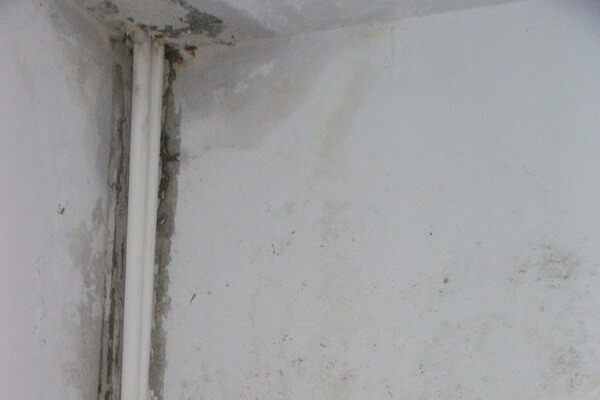
Quick-Fix Remedies Until You Can Call Professionals
Fortunately, you can do quick roof fixes when bad weather restricts you from contacting roofing professionals.
However, keep in mind these repairs are only temporary. They will minimize further roofing damages and additional roof leak creation. Therefore, once the storms have subsided, contact your roofing contractor immediately.
Plastic Tarpaulin
Flexi-tapes and tarpaulins allow homeowners a cost-effective solution against leaks. If you have precisely pointed out the roof leaks, tarps are effective roof leak repair material.
Stretch out the tarp over the leaking area. Make sure the material tightens across the ceiling area. Then, use nails on its edges to hold it in place. Additionally, apply roofing cement or flexi-tapes on the nails to prevent new leaks from happening.
Flexi-tapes with moisture-resistant adhesives will seal up small internal ceiling holes. However, sealing internal leaks will cause water to pond and leak through other areas of your roof.
Curled Shingle Straightening
Shingle roof systems work by letting rainwater flow downwards towards your gutters. Therefore, if some strong winds and consistent hailstorms cause roofing shingles to curl, leaks will penetrate their underlayment. Fortunately, it is simple to straighten them.
During the weaker intervals of storms, use some roofing cement to the underside of the shingle edges. Gently press them back down into place.
Take note that curling shingles is a sign they need replacement. In this light, buying a small shingle bundle to replace the curled ones are a better solution.
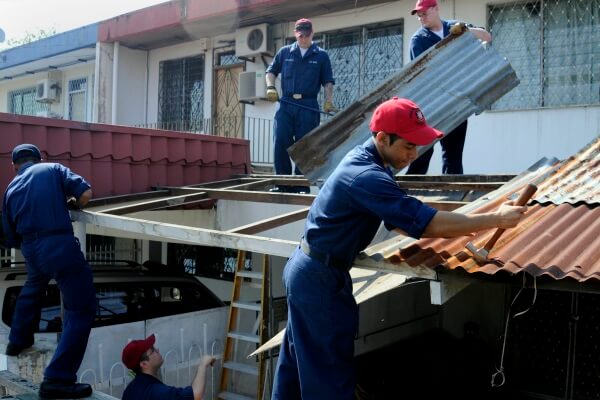
Sheet Metal Patches
If you have spare sheet metal in your home and have cutting tools, you can trim metal sheets to create patches.
First, measure the damaged sections of your roof. Then, cut the sheet metal according to the damaged sections. Use nails to secure the sheet metal patches along the damaged areas. Lastly, apply roofing cement on the heads of the nails to prevent further leaks.
This will affect the curb appeal of your property. However, to improve the lifespan and durability of your roof during consistent storms, sheet metal patches are definitely useful.
Conclusion
Conducting an emergency roof leak repair is imperative during consistent storms. However, make sure to contact a trusted roofing contractor once the weather has settled down.
These signs and repairs will help your roof survive for a bit longer. However, your roof has sustained extensive damage in the process. Only proper roofing estimates, repairs, and replacements guarantees your roof will deliver better protection in the storms to come.


